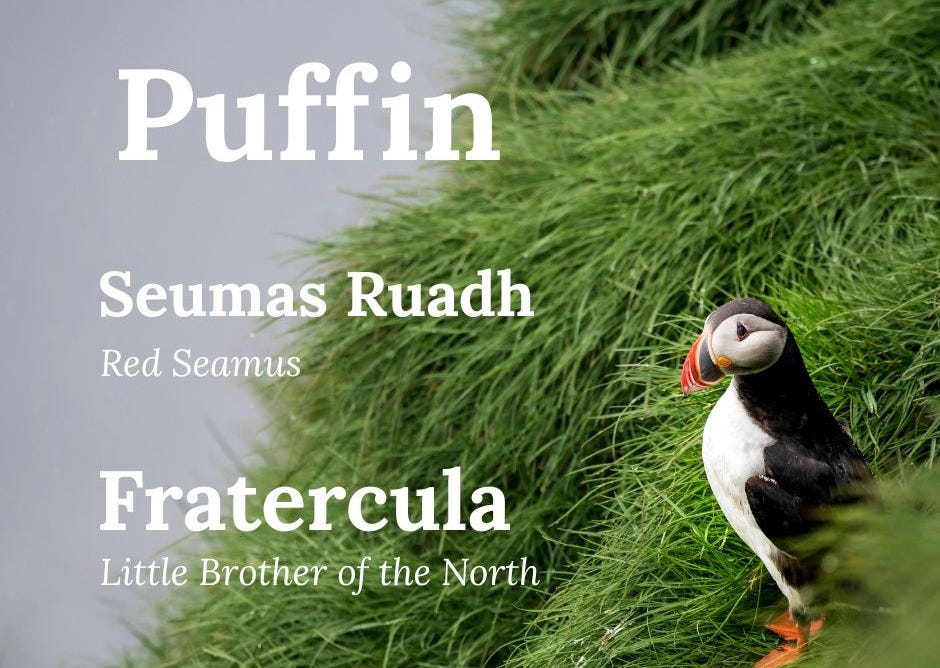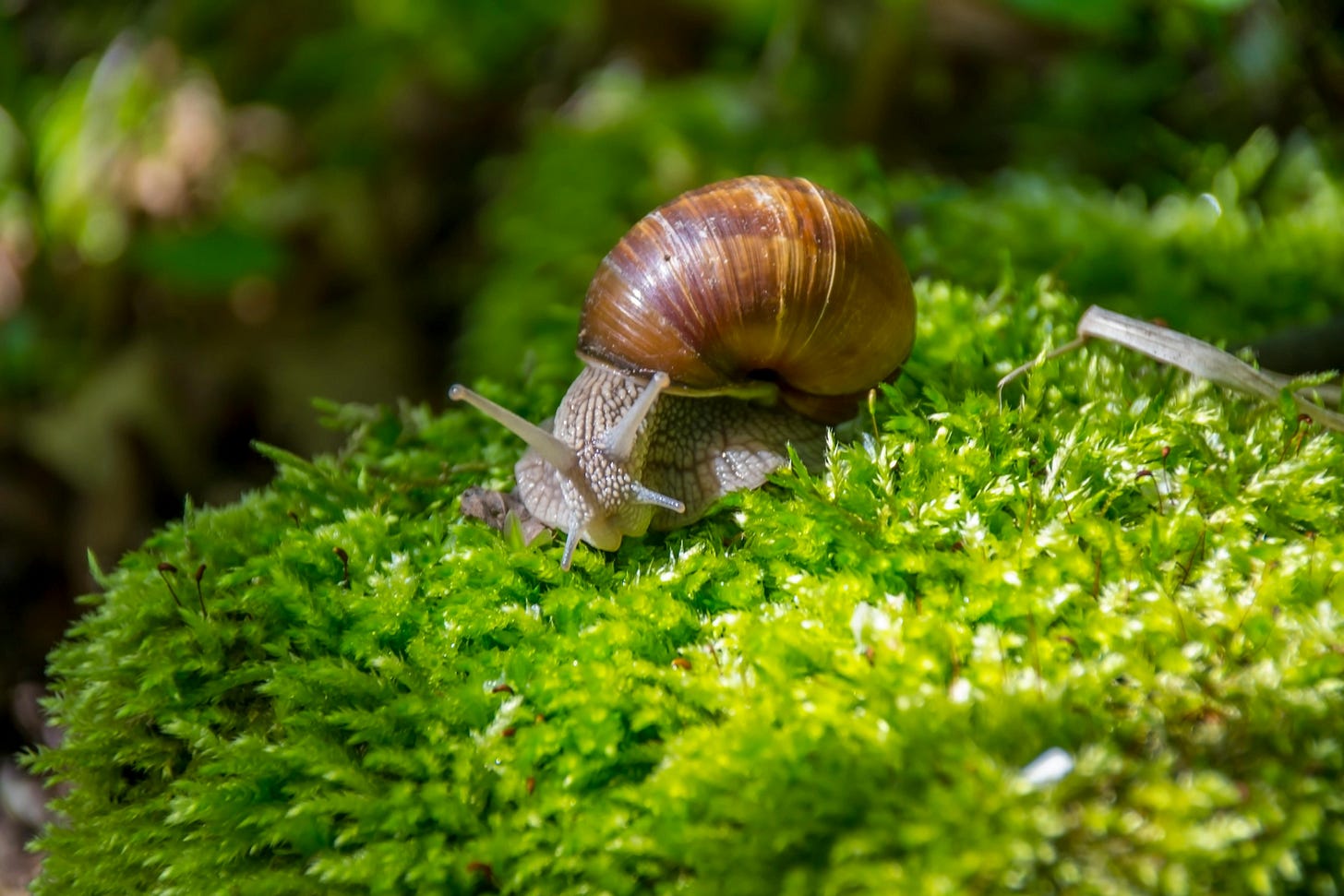I’ve been learning Gaelic, and went along to a Gaelic bird names lesson a few days ago. It’s a beautiful and poetic language, and its naming process will often focus around a colour, a personality or a story. Take the Atlantic Puffin. One Gaelic name for it is Seamus Ruadh - Seamus, being the Gaelic for James, and Ruadh meaning reddish. Red James: a lovingly-given human name, probably because the bird was so tame and friendly. Even its Latin name, Fratercula, means Little Brother of the North. Their black and white plumage reminded people of priests (brothers), but I like the idea of seeing these convivial birds as brethren, family.
Naming is important. I came across a beautiful discussion of this in Robin Wall Kimmerer’s Gathering Moss (Read along with me in my eco book club!). She laments the fact that Moss doesn’t really get many names outside its Latin names, its scientific classifications. She feels strongly about naming in nature:
“Each name calls up a story, and connects us to the past and present of this place every time we say it”
I asked some of the wonderful people reading and engaging with my eco book club what naming meant for them. Tania put it quite beautifully: “knowing a name feels like meeting someone I know — a friend.”
Richard also talked about “meeting” a plant and learning its name: “names are essential to connection… it’s the way you tie together all the other things you know about that entity.” Think about your own name. Doesn’t it feel rubbish when someone gets it wrong, or forgets it?
In nature, local names can tell a story, or give you an insight into that community or culture. In Scotland, where superstition used to — and still does — run rampant, names are infused with mythology and magic. The Fairy Glen, Witches Hill, The Deil (Devil’s) Head. A name is so much more than a label.
Scientists chose the names of Mosses: Bryophyta, Tillandsia usneoides, Marchantiophyta. They don’t quite trip off the tongue. What story can be told if you don’t understand a name, or don’t know a name? I’d like to suggest a little activity when you’re next out in the woods. “Meet” something natural and give it a name. Name a Tree Susan, perhaps. Or a mound of Moss on a post Green Crown. How does that change your perception of it? You may find yourself noticing and remembering it on future walks.
You might have spotted an interesting grammatical quirk in this piece, if you’re a pedant, like me. All animals and plants have been capitalised, therefore treated as proper nouns, as names — the same as humans. This was a decision made by the RSPB in all their papers and communications recently, and working alongside them in my job, something I’ve picked up too. It is part of humanising animals in order to elevate their rank in the eyes of people.
A capital letter says “I matter”.
I’ll leave you with one more Gaelic bird term I learned, for a White-Tailed Eagle: Iolaire sùil na grèine. It means The Eagle with the Sunlit Eye. This is a bird who has been shot and poisoned for predating lambs, and one whom nature charities and projects have spent years reintroducing in the UK, against the desires of many farmers and rural landowners. It has a bad reputation, which caused devastating losses to its numbers in the past.
But learning this new name reminds me of the pure beauty of the bird, beyond its notoriety. A glint of gold in feathers. This is the power of a name. It most of all tells you a story of something’s — someone’s — value and significance. And imagine how that can impact how you are willing to treat them.
Hello! I’m Rosie. I work in communications for an ecological restoration charity, and I’m also about to begin a Master’s in Literatures, Environments and Places. Feel free to subscribe if you’re interested in communications and the environment!




I'm going to re-read Gathering Moss with you! YAY!
There is another great discussion that Robin Wall Kimmerer has in Braiding Sweetgrass. "it's a sign of respect and connection to learn the name of someone else, a sign of disrespect to ignore it. And yet, the average American can name over a hundred corporate logos and ten plants. Is it a surprise that we have accepted a political system that grants personhood to corporations, and no status at all for wild rice and redwoods? Learning the names of plants and animals is a powerful act of support for them. When we learn their names and their gifts, it opens the door to reciprocity."
Beautiful, Rosie 💚